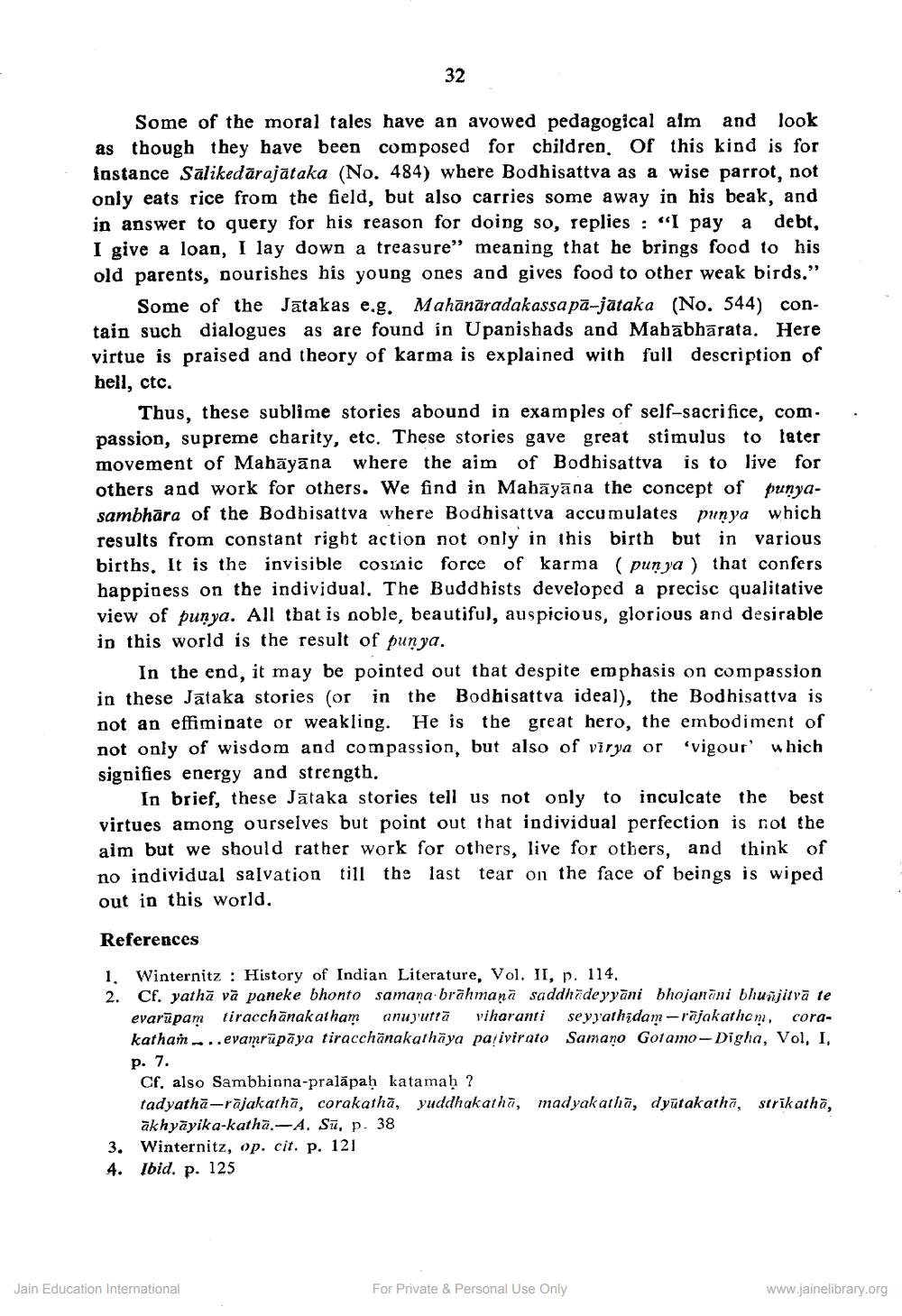________________
Some of the moral tales have an avowed pedagogical aim and look as though they have been composed for children of this kind is for instance Salikedārajataka (No. 484) where Bodhisattva as a wise parrot, not only eats rice from the field, but also carries some away in his beak, and in answer to query for his reason for doing so, replies : “I pay a debt, I give a loan, I lay down a treasure” meaning that he brings food to his old parents, nourishes his young ones and gives food to other weak birds.”
Some of the Jātakas e.g. Mahānāradakassa pā-jātaka (No. 544) contain such dialogues as are found in Upanishads and Mabābhārata. Here virtue is praised and theory of karma is explained with full description of hell, ctc.
Thus, these sublime stories abound in examples of self-sacrifice, com. passion, supreme charity, etc. These stories gave great stimulus to later movement of Mahāyāna where the aim of Bodhisattva is to live for others and work for others. We find in Mahāyāna the concept of punyasambhāra of the Bodhisattva where Bodhisattva accumulates punya which results from constant right action not only in this birth but in various births. It is the invisible cosmic force of karma ( punya ) that confers happiness on the individual. The Buddhists developed a precise qualitative view of punya. All that is noble, beautiful, auspicious, glorious and desirable in this world is the result of punya.
In the end, it may be pointed out that despite emphasis on compassion in these Jataka stories (or in the Bodhisattva ideal), the Bodhisattva is not an effiminate or weakling. He is the great hero, the embodiment of not only of wisdom and compassion, but also of virya or "vigour' which signifies energy and strength,
In brief, these Jātaka stories tell us not only to inculcate the best virtues among ourselves but point out that individual perfection is not the aim but we should rather work for others, live for others, and think of no individual salvation till the last tear on the face of beings is wiped out in this world,
References
1. Winternitz : History of Indian Literature, Vol. II, p. 114. 2. Cf. yathā vā paneke bhonto samaņa brāhmaṇā saddh7de yyāni bhojanāni bhunjitvā te
evarūpam tiracchānakatham anuyutta viharanti seyyathidam-rājakathcm, corakathan -..evamrūpāya tiracchānakathāya paivirato Samano Gotamo-Digha, Vol. I, p. 7.
Cf, also Sambhinna-pralāpaḥ katamaḥ ? tadyathă-rājakathā, corakathā, yuddhakathā, madyakathā, dyütakathā, strikathā, akhyāyika-katha.-A. Su, p. 38
Winternitz, op. cit. p. 121 4. Ibid. p. 125
Jain Education International
For Private & Personal Use Only
www.jainelibrary.org




